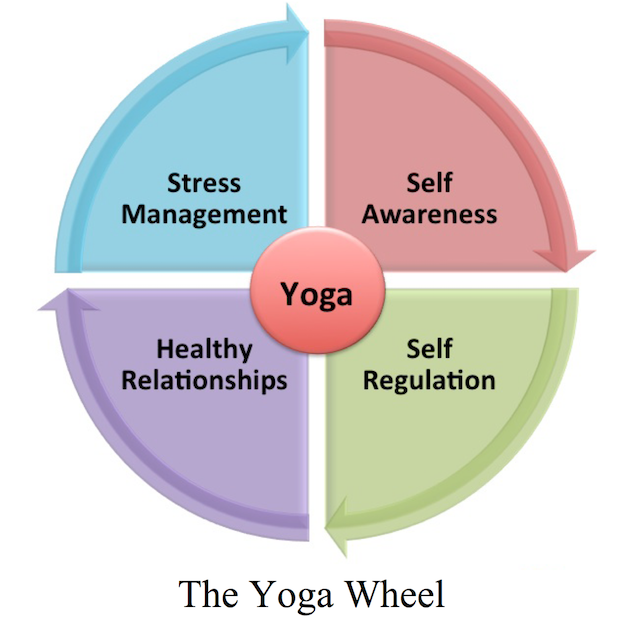![]()
Can yoga and mindfulness really reverse climate change? If you are rolling your eyes just reading this question, read on!
It is no longer a matter of scientific dispute that climate change poses real challenges for current and future generations and impacts of the changing climate on weather patterns are already evident in most regions of the globe.
Today, nearly 100 percent of climate scientists agree that climate-warming trends over the past century can be attributed to human activity. It is fairly certain that increased demand on available resources is expected to be severe in regions with populations that are most vulnerable to climate change and that are already prone to conflict.
We often rush to blame greedy corporations and self-centered nations for climate change, forgetting that it is individuals who design systems, build organizations, and constitute nations. We are the corporations and self-centered nations. We are equally quick to look outside ourselves for solutions to climate change, but we often forget that our efforts to change our external environment need to be balanced by our efforts to change our internal environment, ourselves.
Human-induced climate change has put Earth’s population and its ecosystems in a vulnerable position and demonstrates the challenge of planning long-term for sustainability. The paradox is that our evolutionary history has equipped us for long-term planning and action. Humans possess a highly advanced capacity for mental “time travel” and are arguably unique in that we can recall past events and anticipate future scenarios. We can imagine and predict multiple, complex outcomes and act accordingly in the present to achieve desired outcomes in the future.
Personal Transformation and Global Sustainability.
We have learned a lot by asking how humans contribute to climate change, but we rarely ask why we leave a larger-than-necessary carbon footprint. Why do we confuse what is a “want” with a “need”? Why do we choose what is pleasant in the short term and not what is good in the long term? If we are serious about avoiding the worst effects of climate change, we must question economic growth itself. In addition to economic changes, we need social changes that shift our emphasis away from materialistic values—the cause of global warming and ecological collapse.
The eight steps of Raja Yoga, which are an optimal approach for personal transformation, can create these shifts. The first step is the practice of 10 powerful and interrelated moral and ethical principles (yamas and niyamas), such as nonviolence, truthfulness, non-coveting, discipline, and self-surrender.
Acting in accordance with these principles affects our carbon footprint as a species because they represent ethical guidelines for living that also happen to be sustainable, such as developing a sense of inner abundance, voluntarily embracing simplicity, letting go of what is not essential, and making choices for long-term good.
The next two steps are yoga postures (asana) and breathing techniques (pranayama). Asana provides us control of our bodies, through stress resilience and the healing of trauma, while pranayama creates connection between breath and emotion. These transformative skills literally rewire our brains and change behavior.
The next three steps are a progressive inward journey consisting of introspection (pratyahara), deepening into concentration (dharana), in turn deepening into meditation (dhyana). Meditation enables our mind to become a little more calm and still, and less frenetically active. As we build our capability to regulate our emotions, it affects everything we do—what and how much we eat and drink, what we read and watch, who we hang out with and what we discuss, what/when/why we buy, and how we work, live, and play—in short, it determines our carbon footprint!
The Yoga Wheel.
We can think of the yoga practice as a wheel, where yoga starts out providing us with optimal tools for stress management. As we develop stress resilience, we develop self-awareness, and we begin to recognize the chasm of difference between “I am sad/mad/stressed” and “I am feeling sad/mad/stressed.” As we develop self-awareness, we gain greater ability to regulate emotion, the ability to act rather than react, to develop the self-control to resist an impulse to acquire something that we may want but do not need. All of these three capabilities then translate into healthy relationships with everyone and everything around us, with growing empathy.
As we continue to traverse this wheel, we spiral toward an evolution of our consciousness. This spiral leads us toward the eighth step of yoga, self-realization (samadhi), which is the awareness that we are all intimately interconnected and interdependent. As we move around the wheel aligning our thoughts with actions, we can adaptively reduce our individual carbon footprint and even curtail desires that lead to larger carbon footprints.

A Dissemination Model.
We simply don’t have time to rely on governments or institutions to take actions on our behalf or to encourage everyone to become yoga teachers and practitioners. Instead, we need to extract the essence of yoga and distill it down to a few minutes of practice that can be done regularly by anyone, anytime, anywhere.
Niroga Institute, a nonprofit based in Northern California, has done precisely that. Niroga has developed a series of 20-minute sequences of yoga poses, breathing techniques, and meditation. These practices are known as Transformative Life Skills (TLS). Multiple studies of TLS with children have found it decreases stress and increases emotional regulation when done regularly.
With a potent, universal practice that anyone can do anytime and anywhere, we can keep traversing the yoga wheel, getting better and better at it. We can then share it with ever-increasing confidence and authenticity.
Imagine the possibilities if most of the one billion people in the developed world, where consumption is most rampant, were acting through emotional regulation and self-mastery most of the time, with each striving to be mindful of future generations. Humanity would make great strides toward leaving the smallest possible carbon footprint arising from a palpable awareness of interconnectedness.
Imagine the possibilities if every child in the world could learn these transformative life skills from childhood—we might mitigate the adverse effects of climate change—or possibly even avert the change in a single generation.
~
~
~
Author: Dr. Matthew Wilburn King, Dr. Bidyut “B. K.” Bose, Dr. Rob Schware
Image: Rachel Brathen/Instagram, Yoga Wheel image courtesy of author
Editor: Travis May


 Share on bsky
Share on bsky




Read 0 comments and reply